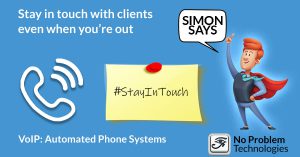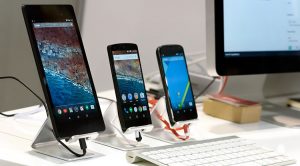With the upcoming BT ISDN Shutdown, more and more businesses are making the transition to VoIP.
Click here for further reading on VoIP vs Landlines, the benefits of VoIP and making the switch
Here are some terms you may find useful to understand.
VoIP: Voice over Internet Protocol
A telephone system that runs phone calls over the internet rather than over a dedicated telephone line.
VoIP phone
A phone that receives the voice data in its own internal system, this includes mobile phones. This system for telephony can be hardware or software based.
BYOD: Bring Your Own Device
Essentially this means that employees can use their own, personally selected and purchased device to use for business purposes. This includes smartphones, laptops and tablets. The devices would operate within the company’s secure corporate network and may be subject to additional security measures.
Cloud Communications / Cloud Telephony
This is where telephone communication and voice data are hosted on the internet, often referred to as the Cloud. Cloud Telephony operates independently from the hardware and software systems of the company utilising these services.
PBX: Private Branch Exchange
This in a private / in-house telephone network used company-wide. It allows users to communicate internally with each other and to outside of the company. A PBX enables free calls among users and operates independently from the public switched telephone network (PSTN), also known as landlines.
With this is mind, it is important to note the distinction between a traditional PBX and a hosted PBX. A traditional PBX system is located onsite and is restricted to internal company usage only. A hosted VoIP PBX uses internet protocol to transport calls, this essentially means that you can make phone calls remotely as if you were in the office.
SIP: Session Initiation Protocol.
This is a standard or set of rules for starting, maintaining and ending an interactive user session be it video, chat, gaming and more. The SIP protocol is the basis of VoIP.
SIP Trunks – to take over ISDN in 2025
A SIP Trunk (also known as a SIP Phone Line) is the modern standard for business telephony. It is VoIP service that connects the phone system (PBX) to the PSTN (telephone network) using the internet. It acts as the virtual connection to the PTSN utilising an internet connection. For example, enabling VoIP services by connecting a PBX to the internet or an ITSP (Internet Telephony Service Provider).
SIP Phone:
This phone uses SIP to make a voice call over the Internet.
ITSP (Internet Telephony Service Provider)
These are the businesses that provide and host digital communications.
ISDN: Integrated Services for Digital Network
A digital version of the telephone line, established in the mid 90’s for telecommunication using traditional copper line networks. This was the first service to allow businesses to send data, such as voice calls or images, through their phone lines using the internet. ISDN will be switched off by 2025 to be replaced with ITSP.
PTSN: public switched telephone network
This refers to a physical phone line, also known as landline or fixed-line telephone. Calls are transmitted over copper or fibre telephone lines using analogue signalling, a system commonly referred to as “traditional telephony.” The Public Switched Telephone Network (PSTN) is scheduled to be phased out by 2025, to be replaced by Internet Telephony Service Providers (ITSP).
Are you ready to make the switch to VoIP? Let’s get started! Contact us to get the ball rolling.
Previous Posts
Landline vs VoIP, what is VoIP?
Download the following PDF to find out more:
- BT’s shutdown of its traditional telephony / ISDN services
- What is VoIP and what are the differences to a landline?
- What are the benefits of VoIP?
- How to make the switch to VoIP.
- Basic terminology that you may find useful.






